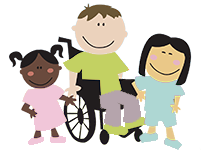Do Children on the Autism Spectrum Benefit From Speech Therapy?
 When my son, Sam, was diagnosed with autism, in 1987, at the age of three, I was pretty devastated. At that time, I wasn’t offered a very good prognosis for his future. Even so, I knew that I had to do everything in my power to help my precious son meet his potential. Speech therapy was one of the first recommendations from the assessment team. I didn’t really understand what speech therapy was at that time, but I followed through and contacted an experienced speech-language pathologist and my son got started in treatment. We were very fortunate to find someone who knew how to work with autism spectrum disorders because at that time, the diagnosis was rare. It was through observing Sam in treatment and through implementing the strategies recommended by his therapist that I became inspired to pursue my Masters in Communication Disorders. I believe that his speech therapy has been one of the most helpful services he has received.
When my son, Sam, was diagnosed with autism, in 1987, at the age of three, I was pretty devastated. At that time, I wasn’t offered a very good prognosis for his future. Even so, I knew that I had to do everything in my power to help my precious son meet his potential. Speech therapy was one of the first recommendations from the assessment team. I didn’t really understand what speech therapy was at that time, but I followed through and contacted an experienced speech-language pathologist and my son got started in treatment. We were very fortunate to find someone who knew how to work with autism spectrum disorders because at that time, the diagnosis was rare. It was through observing Sam in treatment and through implementing the strategies recommended by his therapist that I became inspired to pursue my Masters in Communication Disorders. I believe that his speech therapy has been one of the most helpful services he has received.
Parents have many decisions to make when it comes to deciding how to best help their child with autism, and the emotional, physical and financial toll is typically high. So it is important to ask about the benefits of treatment. I know from personal experience that families feel like they are in a battle against time and they want to be sure they are making the best use of their time and resources as they fight for the best outcomes for their child.
Speech Therapy Makes a Difference!
We know so much more about ASD (autism spectrum disorders) now than we did 25 years ago, but one fact holds true Autism is a significant communication disorder, impacting all facets of communication. The severity of the autism impacts how communication will be effected in any given individual. According to Autism Speaks “Autism spectrum disorder (ASD) and autism are both general terms for a group of complex disorders of brain development. These disorders are characterized, in varying degrees, by difficulties in social interaction, verbal and nonverbal communication and repetitive behaviors. http://www.autismspeaks.org/what-autism.
As you can see, social interaction, as well verbal and nonverbal communication are aspects of communication. Repetitive behavior can also be a means of communication, in that echolalia can serve a communicative function and certain other repetitive behaviors can also serve as a means of communication (though it can also meet a sensory need as well). Speech-language pathologists complete extensive training in neurology as it pertains to communication along with other courses designed specifically for autism spectrum disorders and developmental disorders. Speech language pathologists are experts in communication development and need to be a part of the treatment team for children (and adults) on the spectrum.
Research supports the positive impact of speech therapy for children on the spectrum. The National Outcomes Measurement System (NOMS) of the American Speech-Language Hearing Association (ASHA) has compiled data which demonstrates significant gains for two-thirds of preschoolers with autism receiving speech-language therapy. NOMS data also revealed that of the children who made progress, those receiving more treatment made more significant gains.
http://www.asha.org/uploadedFiles/public/TESAutisticSpectrum.pdf.
In some ways, treatment for ASD is similar to treatment for other developmental disorders. Research supports the use of many strategies that are effective in a treatment session and also in the home, through the guidance and training of parents and caregivers by a speech-language therapist experienced with autism spectrum disorders. One treatment model that has been found very effective is called “Naturalistic Intervention”. Here are some steps for this model:
- Engage the child in an interaction, (caregiver initiated) being highly responsive to communicative response attempts from the child.
- Respond to all verbal and nonverbal initiations from the child
- Be at the child’s level, perhaps down on the floor, at eye level
- Provide meaningful feedback. Child says “tu” and caregiver says “dog”, providing a meaningful model in imitation of the child’s initial label.
- Expand the child’s utterances. Child says, “zoom car” and caregiver says “push the red car – zoom”.
Speech therapy is a very important part of a child’s array of services if they are on the autism spectrum. A key part of treatment should be parent training and support. Strategies, such as the Naturalistic Approach, should be used throughout the day, since repetition is very important for learning. An SLP should also interact with other professionals who may be working with a child with ASD. For example, an ABA consultant, play therapist, or occupational therapist.
Private insurance and Medicaid often cover speech therapy, as an allied health profession. If you have any more questions about treatment, please call Speech & Occupational Therapy of North Texas and a speech language pathologist will be happy to speak with you.

Comments (0)